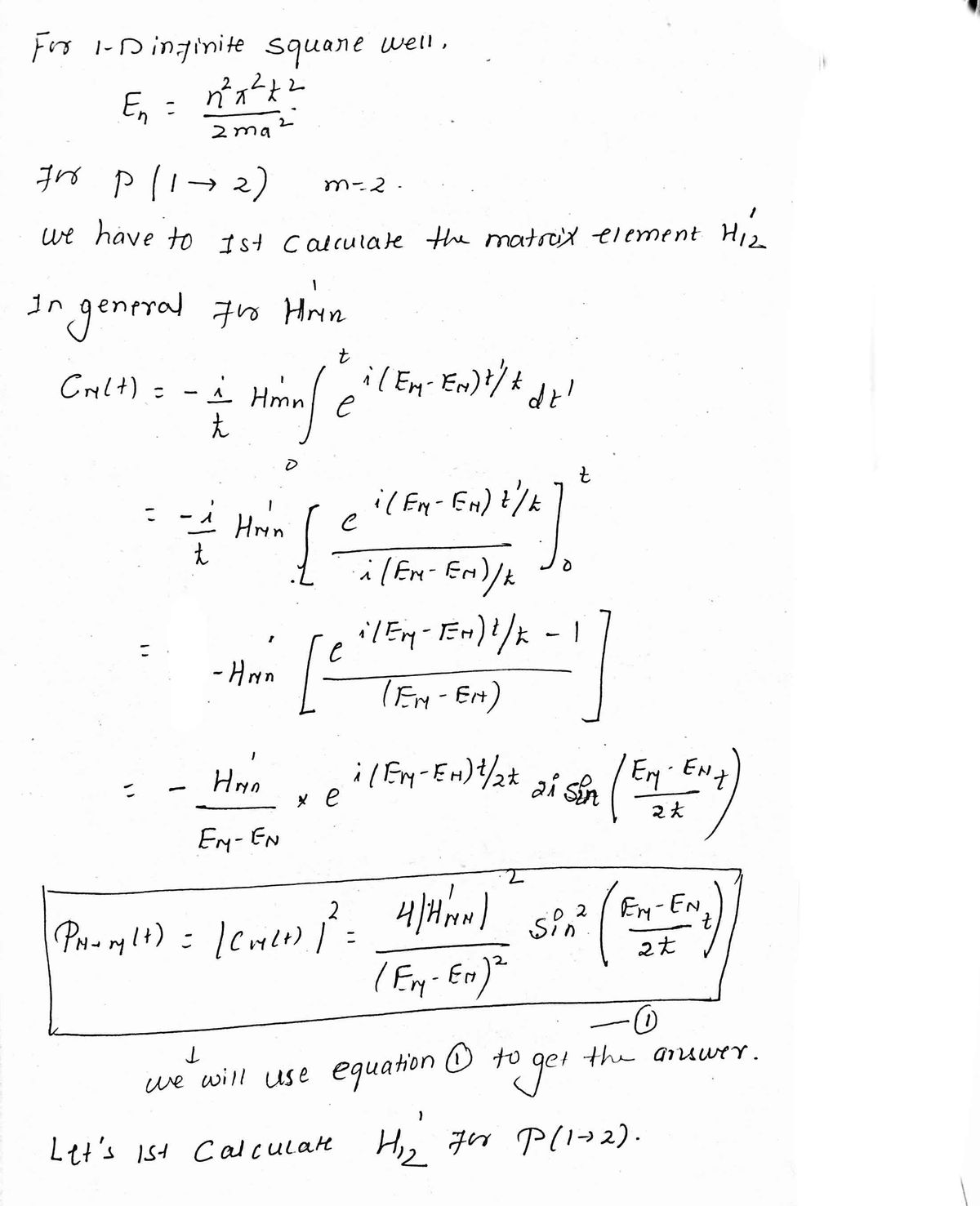E Assume an electron is initially at the ground state of a l-D infinite square well and is exposed to a constant force fiecld E for a short time At.which gives a perturbation term of H' = e Ex. Use equations 3.58 and 3.108 to obtain the transition probability P(I-→ m) for m=2, 3, and 4, respectively.
E Assume an electron is initially at the ground state of a l-D infinite square well and is exposed to a constant force fiecld E for a short time At.which gives a perturbation term of H' = e Ex. Use equations 3.58 and 3.108 to obtain the transition probability P(I-→ m) for m=2, 3, and 4, respectively.
Related questions
Question
Thanks in advance

Transcribed Image Text:3. Assume an electron is initially at the ground state of a 1-D infinite square well and is
exposed to a constant force field E for a short time At.which gives a perturbation term of
H' = e Ex. Use equations 3.58 and 3.108 to obtain the transition probability P(1 → m) for
m=2, 3, and 4, respectively.
Expert Solution
Step 1
Here we will use time dependent perturbation theory. Let us first find out the matrix coefficient for a perturbation which is time independent explicitly for a time dependent perturbation theory.
Step by step
Solved in 5 steps with 5 images
